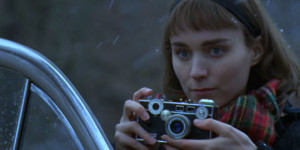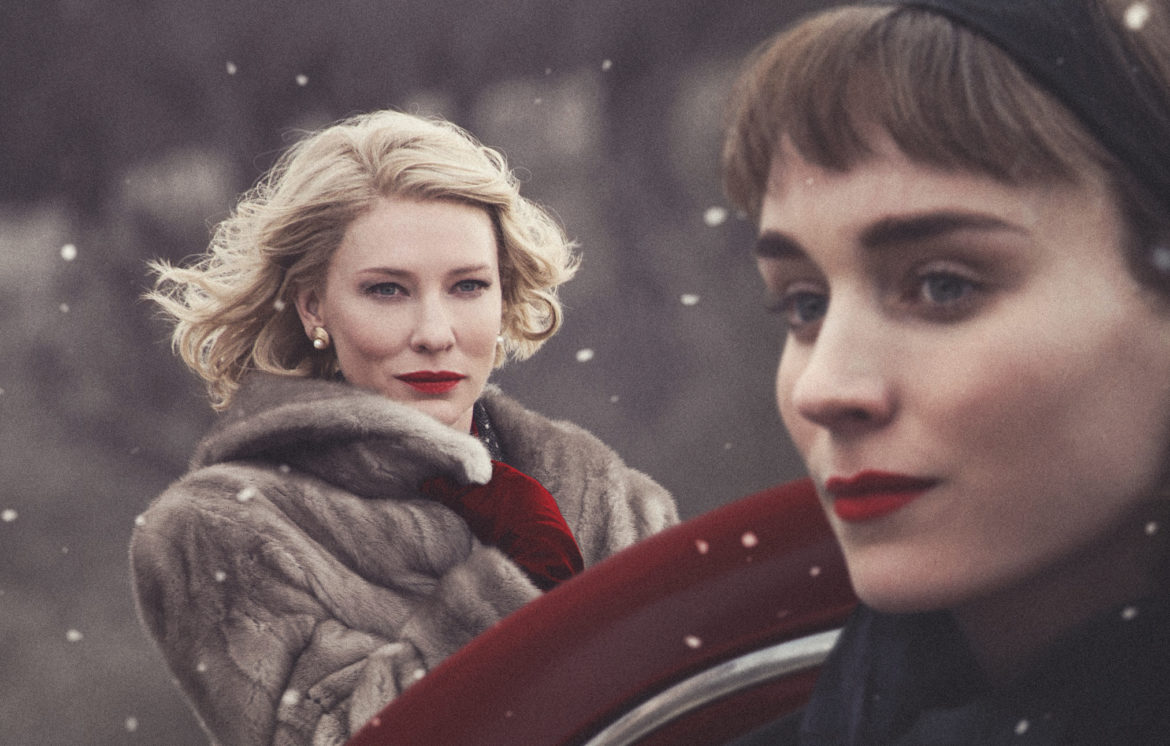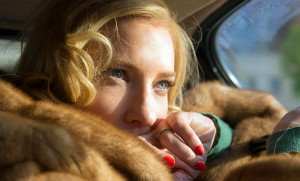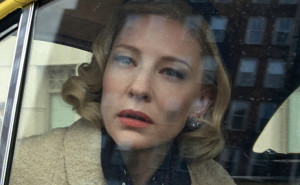With Carol, Todd Haynes cements his place as his generation’s Douglas Sirk, the master of decorous, ravishing melodramas focused on the plights of women, their interior lives manifesting in heightened visual splendor and the weight of the world pressing them down. With Safe and Far From Heaven already out there, there was little doubt of his claim to this title before, but Carol is his Sirkian masterpiece to date, an adaptation of the Patricia Highsmith novel “The Price of Salt” that finds his gauzy sensibility firing on all cylinders.
The narrative follows its titular character, expertly played by Cate Blanchett as the most elegantly fashionable cypher likely to show up on screen any time soon, as she meets a young shopgirl (the ethereal Rooney Mara) with the evocative name Therese Belivet.
It is love at first sight, between two women who would be well-advised not to fall in love – not just because they are two women in a society that abhors such a possibility, but also because of the great distance between them in age and social station. Their first meeting puts it all out there in the image: Carol, adorned in a full-length fur coat with perfectly coiffed hair, and Therese, working a department store doll counter in a floppy Christmas hat, vaguely elfin and probably half Carol’s age. Nothing is said in the moment, but as the camera, taking on Therese’s POV, finds Carol wandering through the store, and their eyes lock in, it’s clear that no amount of sensible argument will stop the inevitable.
The rest of the film follows their tentative friendship, their budding romance, and its disastrous fallout, in ways that it’s probably best to leave mostly unsaid here. Suffice to say: Carol is married and a mother of a young girl, and she’s going through a divorce. Therese is being pursued by several young male suitors, neither of whom can understand her apparent lack of interest in them, nor her alarmingly sudden and deep infatuation with this older woman.
Haynes, working from a script by Phyllis Nagy, with the incomparable cinematography of Edward Lachman, and the sweeping, lovely score from Carter Burwell, creates a dream-like state that echoes both Therese’s experience of first love and Carol’s quiet alienation from a world that doesn’t understand her, and doesn’t want to.
Repeated images feature mirrors, windows, frames within frames, and similar devices that underscore how central the act of looking is to these characters … and, as David Thomson points out in his book The Big Screen, to us as audience, who’ve always been at the movies, fundamentally, to look. This is different than the act of being seen, and the film toys with the distinction at length. Haynes’ mastery is an full display, if subtly.
Carol works best in its first half, before the walls have started closing in, at least in part because the character of Carol works best as a mystery, one which Therese is, in some sense, trying to solve along with us. Therese’s budding career as a photographer underlines this, too – she is a would-be professional looker, taking in the world one image at a time, hoping to find what lies beneath.

There are indelible moments throughout. The quietness of the film lends surprising power to small aspects – a hand on a shoulder, the color of nail polish. Its genius lies in the way such details move the story along and provide a wealth of information visually. There’s tenderness, lust, and heartbreak in Carol, from its plot points to the smallest movements and briefest glances. It’s a wonder of visual storytelling, backed up by nearly perfect performances all around.



